Adaptive mesh
JSOL’s unique development methods run high-speed adaptive analyses for rotating machines that are highly accurate. They can achieve speeds over ten times faster than traditional methods.
Of course, it produces results for more than rotating machine meshes, as well.
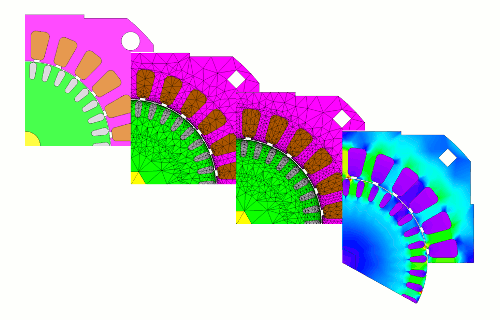 Mesh Division through Adaptive Meshing
Mesh Division through Adaptive Meshing
JMAG Function Videos
* If you cannot access the video, please check here.
Slide and Rotating Mesh
JMAGfs original mesh generation specializing in rotating machines enables automatic mesh generation suitable for cogging torque computing and without requiring complicated settings. JMAG automatically generates a lattice mesh in the gap, enabling both analysis precision and speed. It also supports skews.
- Using the Expanded Slide Mesh broadens the effective range of slide mesh functions.
- Previous versions required use of a patch mesh for axial gap motors, motors with cases, etc.; now analysis accuracy is improved
- Evaluate eddy current distribution from coil leakage flux inside case
- Improved efficiency through combination with extruded mesh
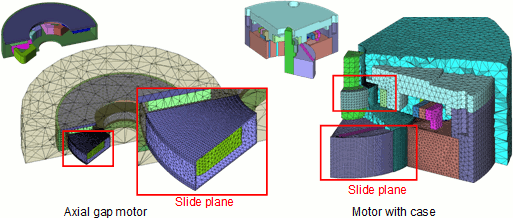
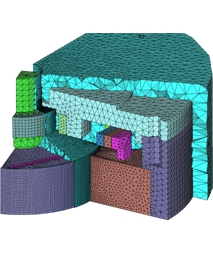 Expanded slide mesh
Expanded slide mesh

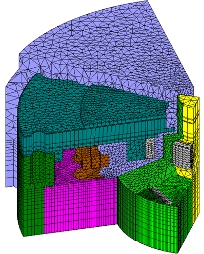 Extruded mesh + Expanded slide mesh
Extruded mesh + Expanded slide mesh
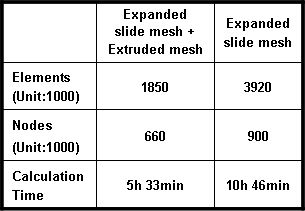 Using the Extruded Mesh enables contraction of model sizes, shortening analysis time.
Using the Extruded Mesh enables contraction of model sizes, shortening analysis time.
JMAG Function Videos
* If you cannot access the video, please check here.
Layered Mesh
Detailed modeling for the lamination of a steel sheet
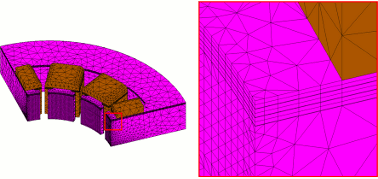 Layered Mesh for layered laminated steel sheet meshes
Layered Mesh for layered laminated steel sheet meshes
JMAG Function Videos
* If you cannot access the video, please check here.
Thin Plate Mesh
Generating mesh for an extremely thin plate model in the analysis space, such as a shield or chassis panel, is difficult using conventional mesh generation methods. However, the thin plate mesh feature can generate a sufficiently large mesh in the plane direction based on the layer of mesh that is generated in the thickness direction. The analysis time is reduced and the accuracy improved for problems related to the scale of a model, such as analyzing shield rooms and the eddy currents that are produced in thin plates.
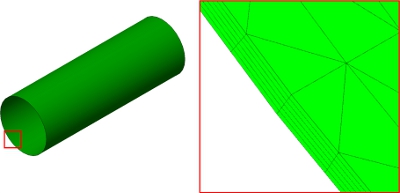 Thin Plate Mesh for tubular layered meshes
Thin Plate Mesh for tubular layered meshes
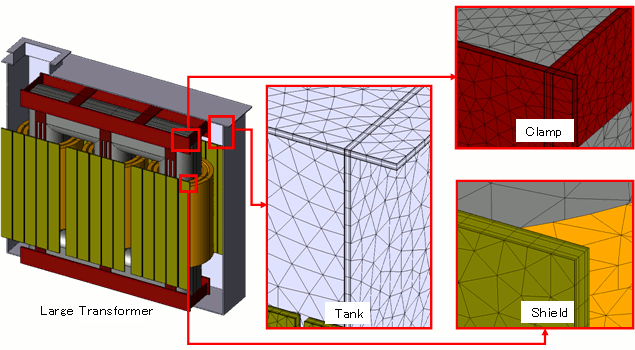 Thin plate mesh for solid model
Thin plate mesh for solid model
JMAG Function Videos
* If you cannot access the video, please check here.
Skin Depth Mesh
Mesh divisions that can accurately express offsets in magnetic flux distribution from the skin effect are necessary to evaluate the effects from eddy currents that flow through a conductor. The Skin Depth function can be used to generate a layered mesh of a specified thickness on the surface (face) of a certain part. This makes it possible to do two things. First, you can accurately express offsets in magnetic flux distribution caused by the skin effect, and second, you can generate a mesh capable of evaluating the effects of eddy currents.
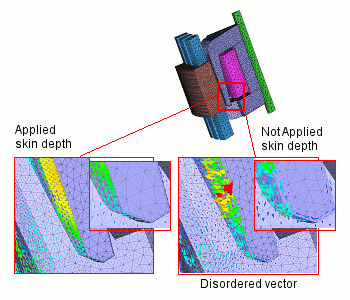 Eddy current vector distribution on the surface of a claw pole
Eddy current vector distribution on the surface of a claw pole
JMAG Function Videos
* If you cannot access the video, please check here.


